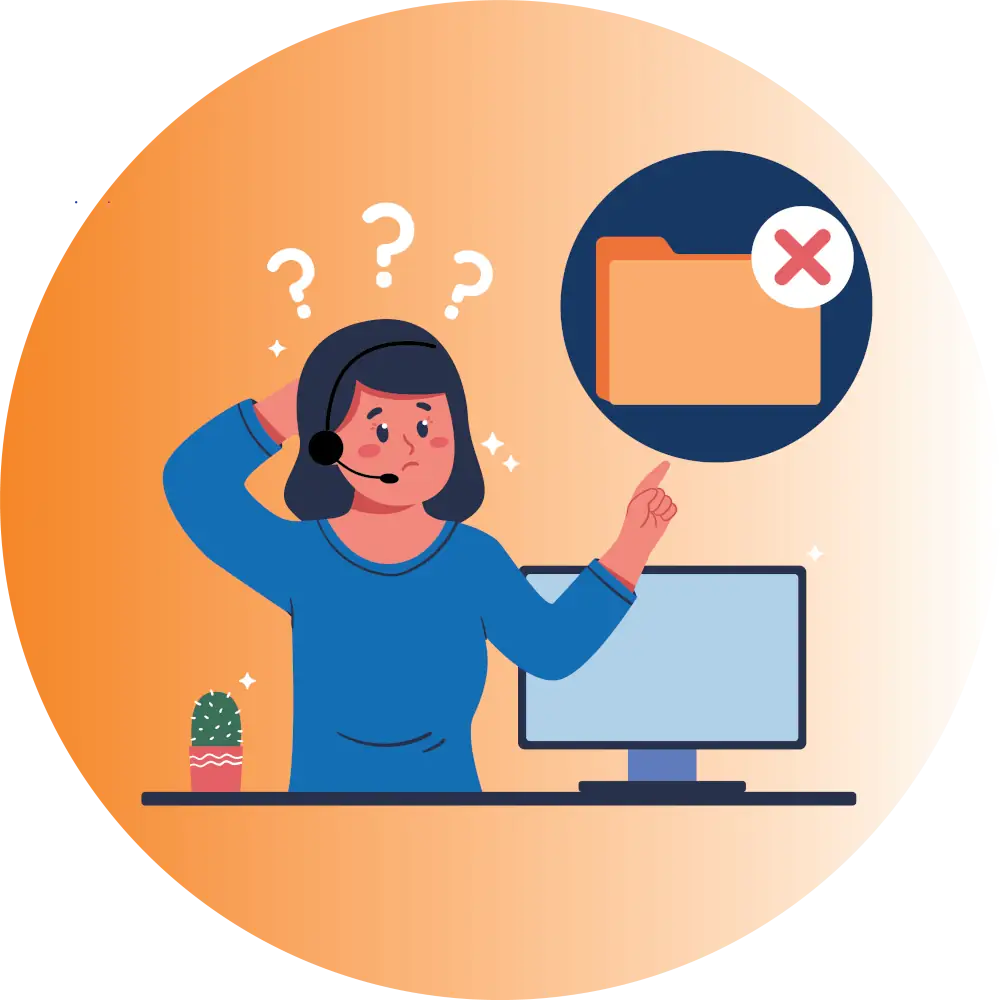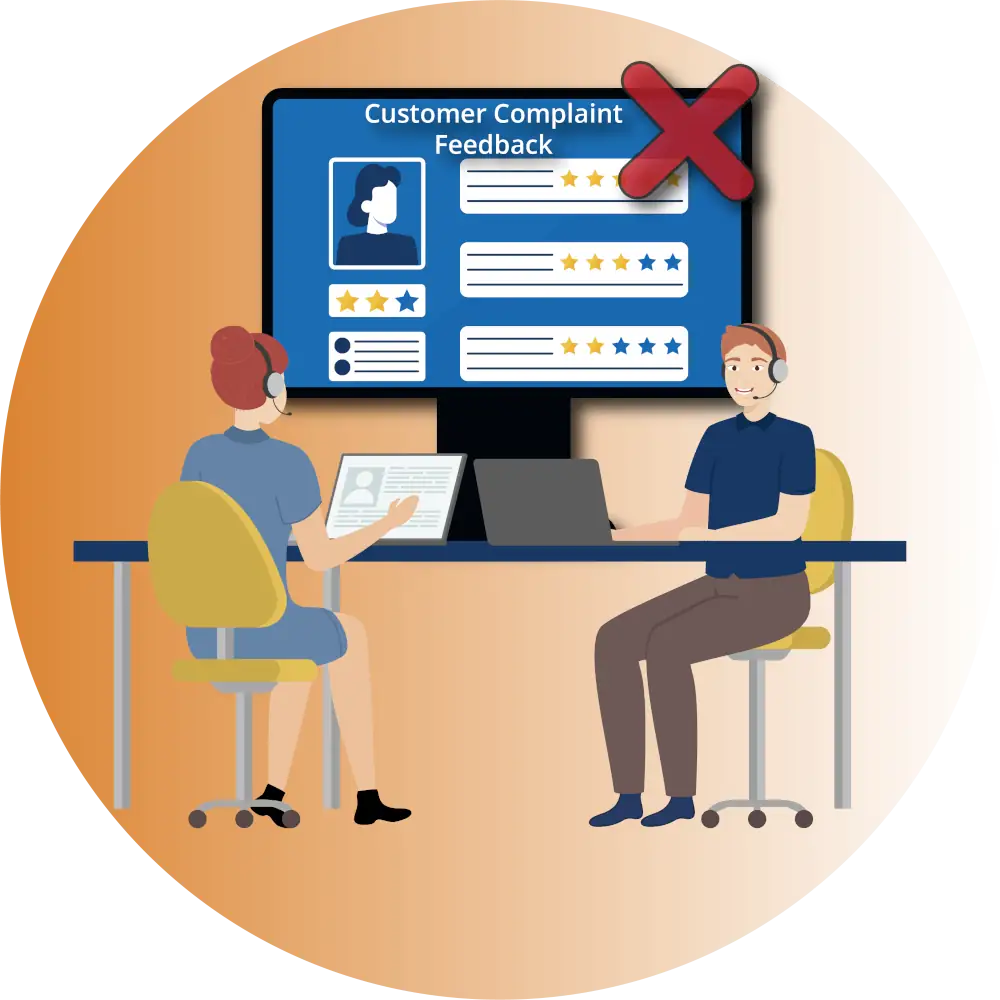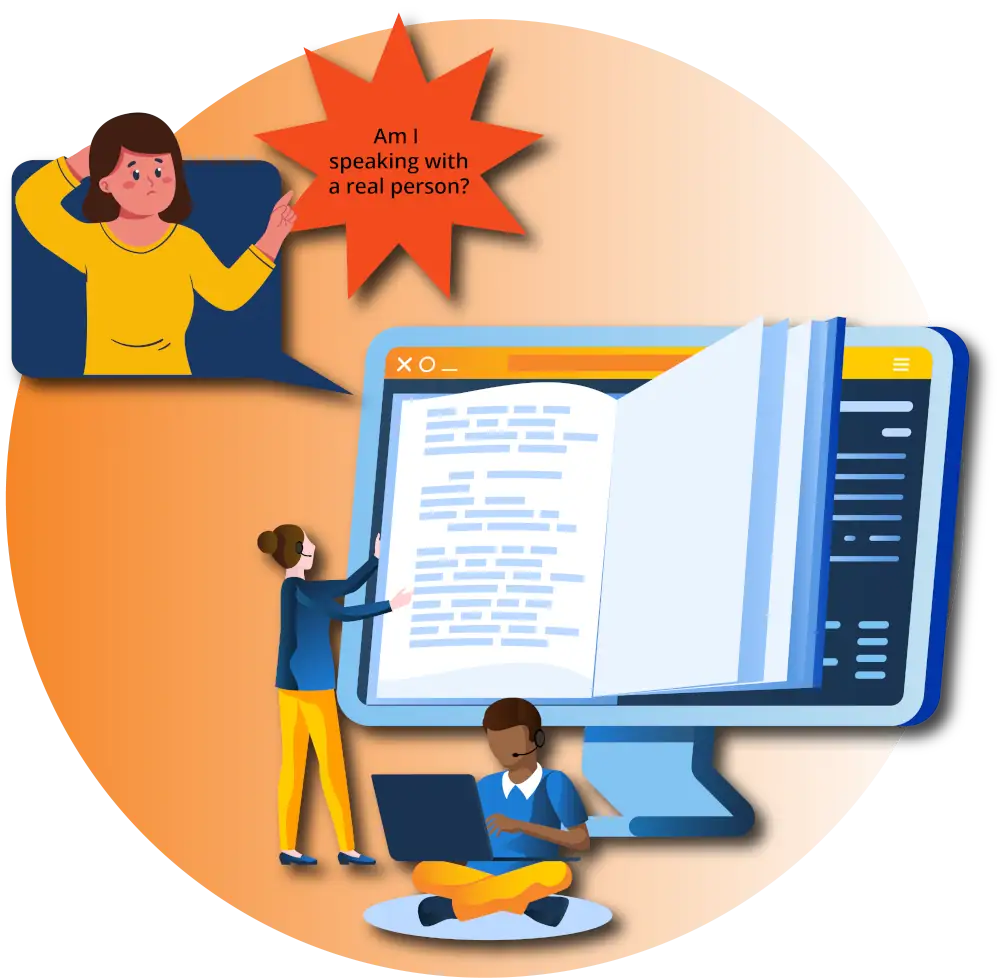A positive CX can lead to loyalty, repeat business, and valuable word-of-mouth, while poor service can drive customers away and harm your brand's reputation. Yet, even with the best intentions, call centers often fall into common customer service traps that negatively impact the customer journey.
These "traps" can range from overpromising and underdelivering to failing to empower frontline staff. While they might seem like minor missteps, their cumulative effect can be devastating to both your customers' satisfaction and your business’s bottom line. The good news is that these traps can be easily avoided with the right strategies in place.
In this blog, we’ll explore seven common customer service traps that plague call centers and offer actionable tips to prevent them from derailing your service operations. Whether you're managing a large customer support team or just looking to improve your team’s performance, understanding these traps and how to avoid them will help you create a smoother, more satisfying experience for your customers.
Trap 1: Overpromising and Underdelivering
Overpromising and underdelivering occur when customer service agents make commitments that the business cannot realistically meet. This could include promises about delivery times, product availability, or resolution of issues that are not feasible within the stated timeframe. While it might seem like a good strategy to excite or reassure customers, it often backfires.
Customer Impact
When customers are promised something that can’t be delivered, they are left disappointed and frustrated, which leads to a loss of trust. For example, if a customer is told that a product will be shipped by the end of the day, but it’s delayed without any communication, they may feel misled. This not only creates negative feelings but also harms your brand’s credibility. The fallout can include customer churn, negative reviews, and a diminished reputation in the market.
How to Prevent Overpromising and Underdelivering
To avoid overpromising, ensure that your customer service team has clear access to accurate and up-to-date information regarding product availability, shipping times, and service capabilities. Train agents to set realistic expectations and focus on transparent communication.
Implement a system to cross-check information across departments so that everyone is on the same page. Empower agents to under-promise and over-deliver whenever possible—this can often lead to higher customer satisfaction than making grand promises.

Trap 2: Providing Inconsistent Information
Inconsistent information occurs when customers receive different answers from different agents or departments about the same issue or product. For instance, one agent might tell a customer that a refund will be processed within 48 hours, while another says it’ll take five business days.
Customer Impact
When customers are given conflicting information, it leads to confusion, frustration, and a lack of trust in your company. It can create an impression that your business is disorganized and unreliable. Customers may feel like they need to speak with multiple people to get the right answers, which only prolongs their problem and escalates dissatisfaction.
How to Prevent Providing Inconsistent Information
To prevent inconsistent information, establish a centralized knowledge base or CRM system that all agents can access in real time. Standardize key processes and FAQs so that every team member is on the same page. Regularly update this information to reflect any changes in policies or procedures. Foster a culture of collaboration between teams—encourage open communication and feedback to prevent misunderstandings.

Trap 3: Failure to Actively Listen to Customers
Failing to actively listen to customers happens when agents don’t fully engage with what the customer is saying, whether by interrupting them, not asking clarifying questions, or jumping to conclusions before understanding the full issue.
Customer Impact
When customers feel unheard, they are more likely to become frustrated and disengaged. This can cause the issue to remain unresolved, requiring additional follow-ups or escalating the problem unnecessarily. It also leaves the customer with the feeling that the business doesn't care about their individual needs or concerns, which can significantly harm customer loyalty and satisfaction.
How to Prevent Failure to Actively Listen
To prevent this trap, invest in training your agents on the importance of active listening. Encourage them to make eye contact (for in-person or video calls) or verbally acknowledge key points during phone or chat interactions, ensuring the customer feels heard.
Teach your agents to use reflective listening techniques, such as summarizing the customer’s issue to confirm understanding. Encourage empathy—agents should feel empowered to show compassion and validate the customer’s feelings. Active listening is the foundation of building rapport and offering tailored solutions.

Trap 4: Ignoring Customer Feedback
Ignoring customer feedback is when businesses fail to actively collect, listen to, or act upon the input provided by their customers. This could include overlooking survey results, ignoring complaints, or not following up with customers who have provided constructive criticism.
Customer Impact
When businesses ignore customer feedback, they risk perpetuating problems that could be easily solved. Customers who feel ignored may take their business elsewhere, write negative reviews, or escalate complaints to management. Furthermore, when feedback is not used to refine customer service strategies, it can cause the same issues to occur repeatedly, leading to customer frustration and a tarnished brand image.
How to Prevent Ignoring Customer Feedback
To prevent ignoring feedback, implement a comprehensive system for collecting and tracking customer responses. Whether it's post-interaction surveys, Net Promoter Score (NPS) surveys, or follow-up emails, ensure customers have a way to provide feedback after their experience. Regularly review this feedback at team meetings and take concrete actions based on the insights provided.
With SQM's auto QA tool, you can analyze 100% of customer calls, benchmark your metrics against top-performing centers, and predict customer satisfaction with up to 95% accuracy.

4.6




 Stars on G2 for mySQM™ Auto QA Tool Reviews
Stars on G2 for mySQM™ Auto QA Tool Reviews












What Differentiates SQM from its Competitors is our...
mySQM™ Automated QA/CX Analytics Solution that uses proprietary AI technology and intellectual property to determine QA scores and predict customer satisfaction with up to 95% accuracy for every call. SQM's Post-Call Customer Satisfaction Prediction QA Model - Is a Game-Changer!
SQM's QA and CSat scores can be used to benchmark against leading call centers. Analyze 100% of customer calls with our auto QA/CX solution.
Furthermore, mySQM™ QA/CX provides agents with self-coaching, self-training, and real-time financial recognition features for calls evaluated to help monitor, motivate, and manage agents to deliver great customer satisfaction.
Trap 5: Transferring Calls Too Often
Transferring calls too often happens when customers are repeatedly passed from one agent or department to another. While transfers are sometimes necessary for complex issues, excessive transfers often lead to customer frustration and longer resolution times.
Customer Impact
Repeatedly transferring calls increases customer effort and creates a feeling of being bounced around without a resolution. This undermines the sense of urgency and care that customers expect. Furthermore, the longer the call lasts, the higher the chances of the customer abandoning the interaction or escalating the complaint.
How to Prevent Transferring Calls Too Often
To prevent excessive call transfers, ensure that agents are well-trained and equipped with the necessary tools to resolve most customer issues on the first contact. Implement a robust knowledge management system that agents can quickly reference to troubleshoot and solve problems independently.
Use integrated CRM systems to give agents a complete view of customer data and history so they can address issues efficiently. Additionally, consider using a tiered escalation process for more complex problems, where agents have clear guidelines on when and why to transfer a call, and to whom it should be escalated.

Trap 6: Failing to Empower Frontline Staff
Failing to empower frontline staff happens when agents are not given the authority or autonomy to resolve issues on their own. This can occur when decisions require multiple levels of approval, or when agents are not adequately trained to handle unique or complex customer situations. As a result, agents are forced to escalate issues unnecessarily, which delays resolutions and frustrates customers.
Customer Impact
When agents are not empowered to make decisions, customers experience delays as their issues are passed up the chain of command. This can also leave customers feeling like their concerns are not being handled by the people who should have the authority to fix them. It often leads to poor service quality, increased customer frustration, and inefficiencies that could have been easily avoided. Customers want quick resolutions and may lose patience if they are constantly told to “wait for approval.”
How to Prevent Failing to Empower Frontline Staff
Empower agents by giving them a clear set of guidelines that allow them to make decisions within certain parameters. For example, allow agents to issue refunds, offer discounts, or resolve certain issues without needing managerial approval, as long as they stay within predefined boundaries.
Provide agents with thorough training on handling difficult situations, including how to manage exceptions to standard procedures. This creates a sense of ownership and confidence among agents, allowing them to serve customers quickly and efficiently, while also improving morale and job satisfaction.

Trap 7: Over-Reliance on Scripts
Over-reliance on scripts occurs when agents follow a script too rigidly, resulting in robotic or impersonal interactions. Agents may seem disengaged or unresponsive to the customer's unique situation if they focus too much on what’s written in front of them.
Customer Impact
Customers can tell when they’re being “read to” rather than being engaged in a real conversation. This leads to a lack of personalization and often makes the interaction feel like a transaction rather than a service experience. Over-reliance on scripts can also result in missed opportunities for agents to provide tailored solutions or demonstrate empathy.
How to Prevent Over-Reliance on Scripts
While scripts are useful for standardizing responses and ensuring important information is conveyed, agents should be trained to use them as a guide, not a strict checklist. Encourage agents to personalize their language, adapt to the tone of the customer, and actively listen to the issue at hand.



